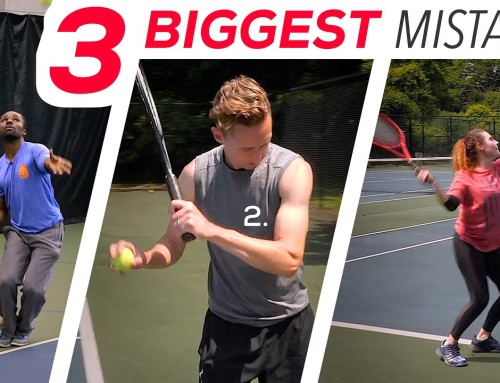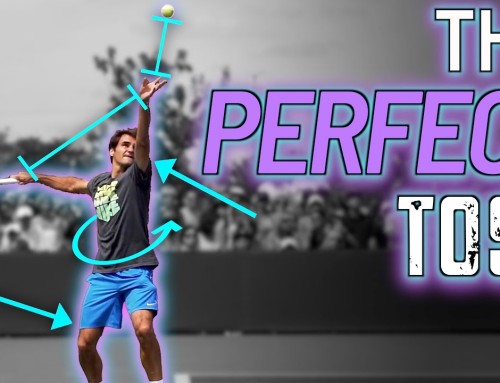What if you could serve like you were a FOOT taller, without growing an inch?
I just finished working with a student, Susan who discovered exactly how to do this, and by the end of our session she was hitting bigger serves than she’d ever hit in her life.
The breakthrough came from fixing a timing issue I’d honestly never seen before in all my years of coaching.
And here’s the thing… you might have the exact same problem and not even know it.
Let me explain what’s really happening at contact on your serve, because this could be the missing piece that unlocks significantly more power for you.
When you watch professional players serve there’s a really specific relationship between contact and arm extension that most recreational players completely miss.
The moment pros make contact is RIGHT at the instant their arm fully extends. There’s a bend in the elbow all the way up until contact, and then contact is like the culmination of all that stretching and bending fully unwinding.
Everything peaks exactly at the moment of impact.
All the energy they’re delivering from the stretch phase explodes right at that precise moment, and then everything decelerates from there.
Makes sense, right?
But here’s what I see constantly with club level players, and what my recent student was doing without realizing it.
They make contact with their arm still in a scrunched up, not fully extended position. And then AFTER the ball is already gone, they extend their arm to completion.
The timing is off by just a split second, but that split second is costing you a massive amount of potential power and consistency.
You’re intuitively sensing that you need to get all that energy out, but it’s not happening until after the ball has already left your racket. You’re setting everything in motion at the right time, but then holding back with your arm extension until after the hit.
Why does this matter so much?
Two huge reasons.
First, by fully extending at contact you’re lengthening the lever you have to pull from and hit from. That means more racket head speed and more power on every single serve. It’s basic physics.
But even more importantly, you’re maximizing your reach and contact point height. The higher you can make contact, the more beneficial of an angle you have down into the service box.
Even if it’s just two or three inches higher, that’s huge. If I asked you whether you’d like to be two or three inches taller athletically, you’d probably say yes in a heartbeat, right?
Well that’s basically what proper timing gives you.
So how do you fix this if you suspect you’re making contact too early, before full extension?
Start by slowly shadowing through the motion without worrying about a perfect trophy pose or the full follow through. Practice connecting your body extension with your arm extension at the same exact time.
The key is feeling what it’s like to link full extension of your body with full extension of your arm and shoulder simultaneously.
Go from your setup position to full extension over and over, super slowly. Pause right at where contact would be. This helps your brain understand the new timing relationship between your body rotation and your arm extension.
Your arm needs to speed up to catch up with your body. Once you’ve got the feel during slow shadows, add the toss and try it for real. Don’t worry about where the ball goes at first.
You just need to get the timing right and peak at the correct moment. The results will follow once the pattern is ingrained.
When my student made this adjustment, the difference was absolutely massive.
Initially she was making contact with about a 90 degree bend in her elbow. Way too scrunched up. But after working on the timing and getting her arm to fully extend at contact, her contact point jumped almost a foot higher.
That’s not an exaggeration.
An actual foot higher contact point just from timing her arm extension correctly with her body rotation. That’s a huge, huge upgrade in athletic advantage and potential power.
So here’s what I want you to do.
Film yourself serving if you possibly can and watch it back in slow motion. Are you making contact with a bent arm and then extending afterwards? Or are you truly peaking at full extension right at the moment of impact?
Be honest with yourself about what you see.
This one timing adjustment could give you the serve you’ve been working toward for years. Sometimes the biggest breakthroughs come from the smallest technical refinements, and this is definitely one of them.
Your Coach,
-Ian







